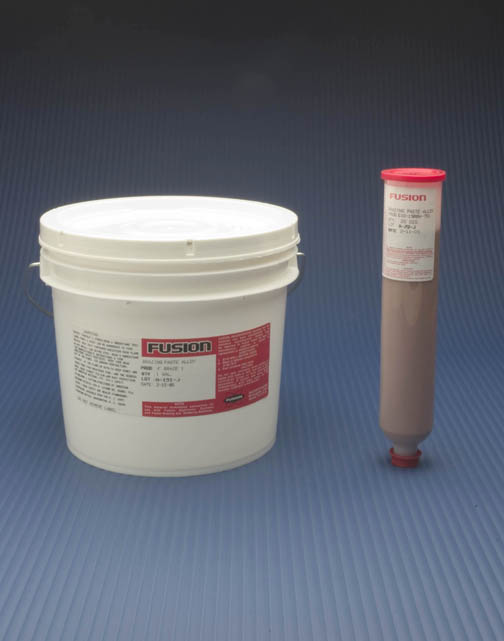
High temperature brazing is often associated with brazing in a furnace with an oxide-reducing atmosphere. Fusion offers a full line of high temperature brazing alloys for various base metals and filler metals. Common filler metals include copper and nickel based alloys.
Of all brazing processes, the most variables are presented when performing high temperature brazing in atmosphere or vacuum. Among these variables are the type of base and filler metal used, type of atmosphere, dew point, temperature, and even furnace construction. Most furnace brazing pastes are supplied without flux, consisting only of atomized filler metal and a neutral binder.
Furnace brazing allows design and manufacturing engineers to join simple or complex designs of one joint or multi-joint assemblies. One of the most common forms of high temperature brazing is accomplished in a vacuum furnace and referred to as vacuum brazing. Parts to be joined are cleaned, paste brazing filler metal is applied to the surfaces to be joined, then placed into the furnace.
The entire assembly is brought to brazing temperature, after the furnace has been evacuated of air, to eliminate any oxidation or contamination occurring as the braze filler metal melts and flows into the joints.
Low temperature brazing alloys are classified as phos copper or silver bearing.
Phos copper filler metals are commonly used on copper to copper and copper to brass applications. The most widely used low temperature brazing alloys are the silver bearing pastes, which may be used to braze most ferrous and non ferrous base metals – excluding aluminum, titanium, and magnesium. Also known as “silver solders” these filler metals are popular due to their free-flowing, ductile nature and relatively low melting range.
USA: (440) 946-3300
EUROPE: +44 (0) 1279 443 122
Find Your Fusion Rep: USA | AMERICAS | EUROPE | ASIA-PACIFIC
Fusion Equipment in Action: Applications & Videos >>


